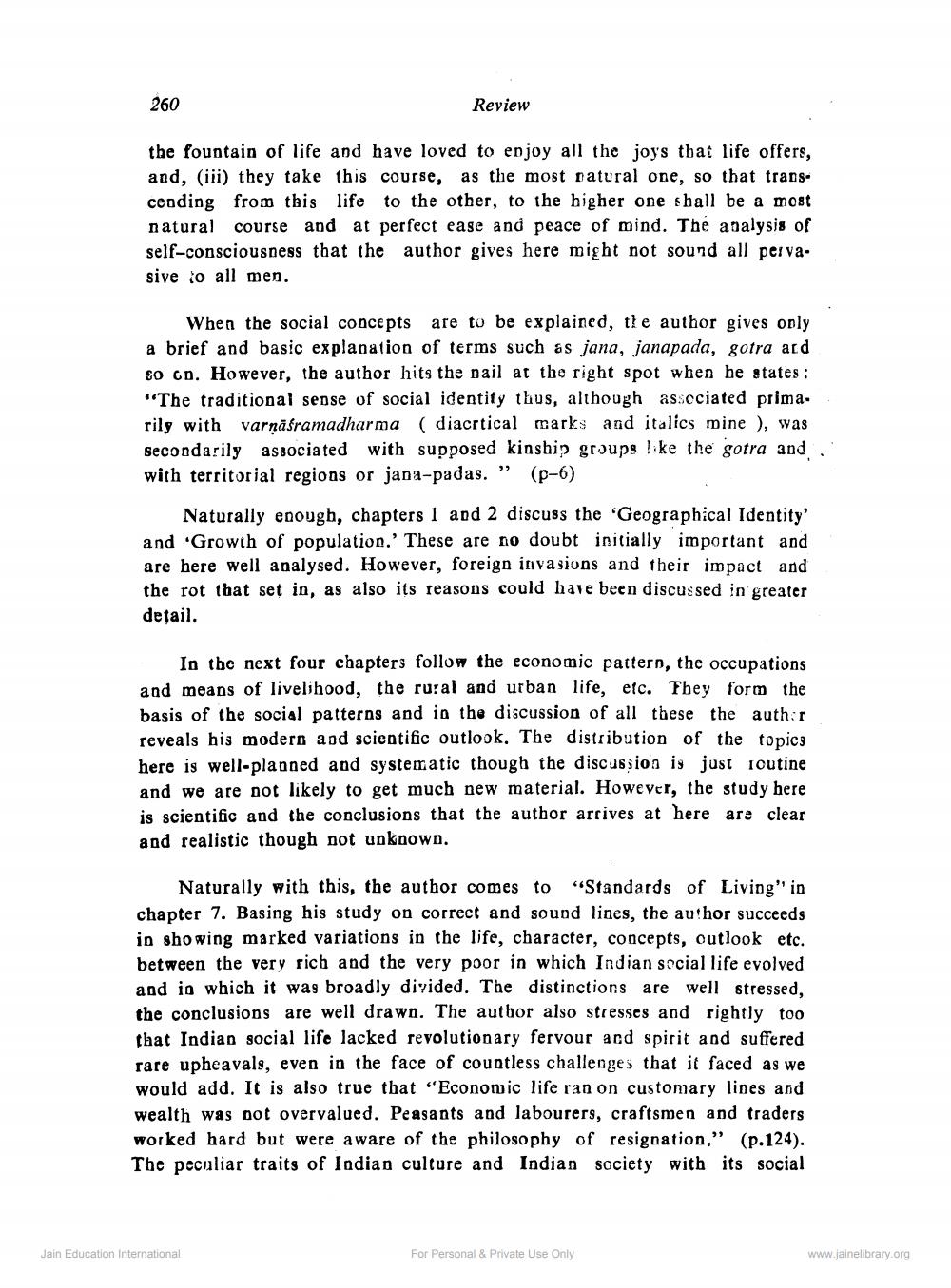________________
260
Review
the fountain of life and have loved to enjoy all the joys that life offers, and, (iii) they take this course, as the most natural one, so that transcending from this life to the other, to the higher one shall be a most natural course and at perfect ease and peace of mind. The analysis of self-consciousness that the author gives here might not sound all pervasive to all men.
When the social concepts are to be explained, the author gives only a brief and basic explanation of terms such as jana, janapada, gotra atd so on. However, the author hits the nail at the right spot when he states: "The traditional sense of social identity thus, although associated primarily with varnaframadharma (diacrtical marks and italics mine), was secondarily associated with supposed kinship groups like the gotra and with territorial regions or jana-padas. (p-6)
Naturally enough, chapters 1 and 2 discuss the 'Geographical Identity' and Growth of population.' These are no doubt initially important and are here well analysed. However, foreign invasions and their impact and the rot that set in, as also its reasons could have been discussed in greater detail.
In the next four chapters follow the economic pattern, the occupations and means of livelihood, the rural and urban life, etc. They form the basis of the social patterns and in the discussion of all these the auth:r reveals his modern and scientific outlook. The distribution of the topics here is well-planned and systematic though the discussion is just routine and we are not likely to get much new material. However, the study here is scientific and the conclusions that the author arrives at here are clear and realistic though not unknown.
Naturally with this, the author comes to "Standards of Living" in chapter 7. Basing his study on correct and sound lines, the author succeeds in showing marked variations in the life, character, concepts, outlook etc. between the very rich and the very poor in which Indian social life evolved and in which it was broadly divided. The distinctions are well stressed, the conclusions are well drawn. The author also stresses and rightly too that Indian social life lacked revolutionary fervour and spirit and suffered rare upheavals, even in the face of countless challenges that it faced as we would add. It is also true that "Economic life ran on customary lines and wealth was not overvalued. Peasants and labourers, craftsmen and traders worked hard but were aware of the philosophy of resignation." (p.124). The peculiar traits of Indian culture and Indian society with its social
Jain Education International
For Personal & Private Use Only
www.jainelibrary.org




